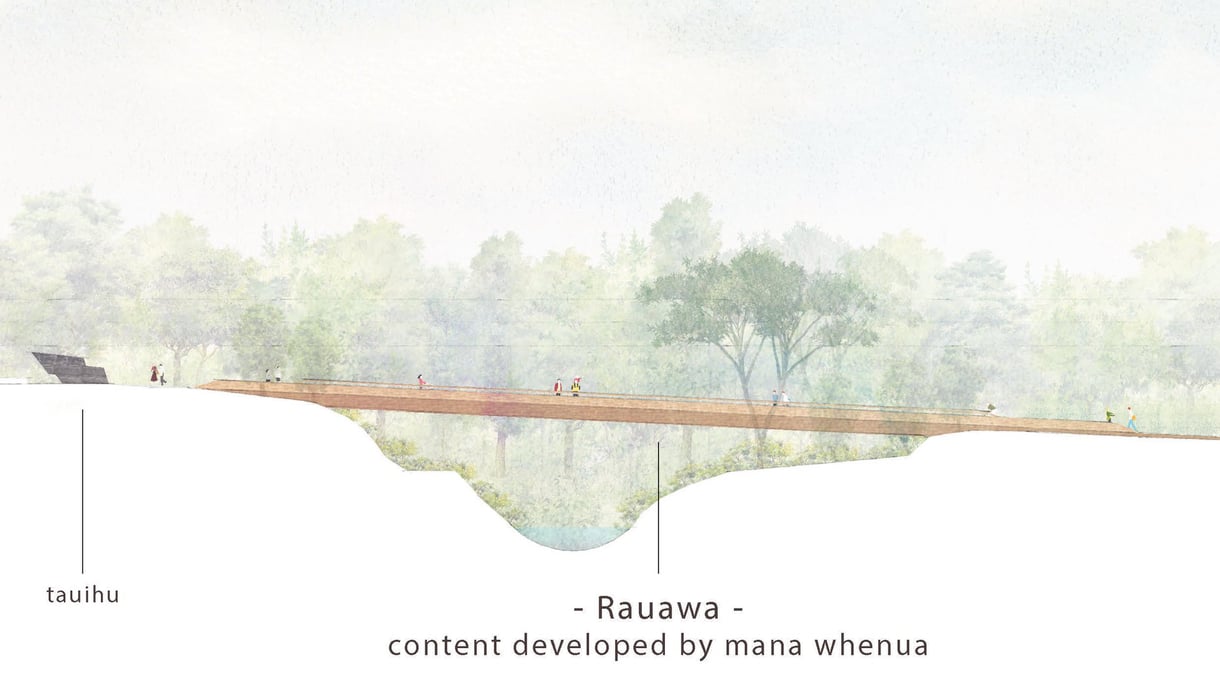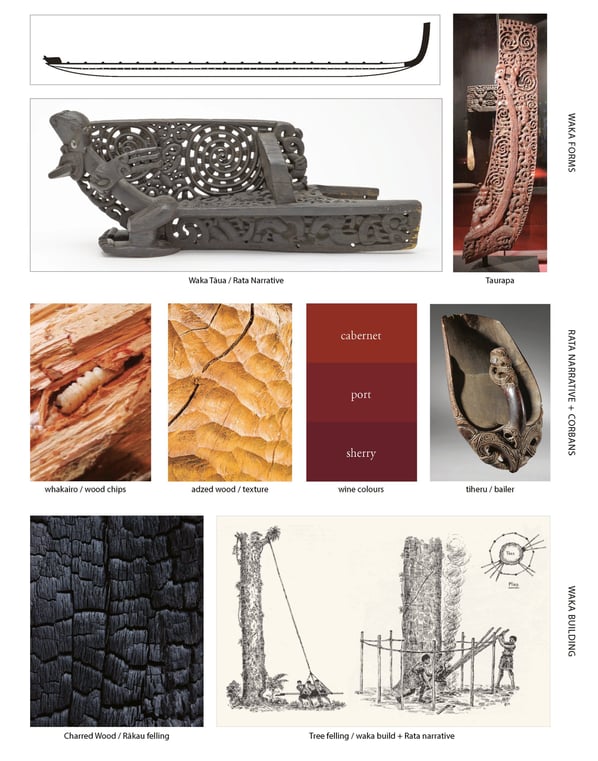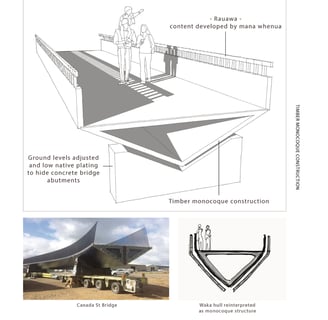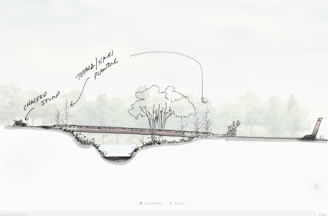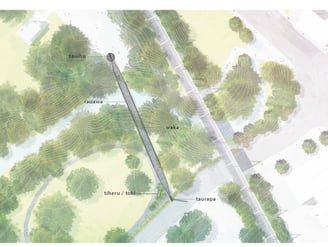Our design takes inspiration from three interrelated areas; the legend of Rata, Māori methods for building waka and felling large trees, and the Corban Estate site and it's history. The larger bridge design and supporting elements (taurapa and tauihu) are derived from a waka tāua (war canoe). This relates directly to the Rata narrative, as in most accounts of the story Rata was attempting to build a larger canoe as opposed to a smaller waka tīwai or waka tētē. We have abstracted the waka form somewhat though as the intention is not to create a bridge that looks exactly like a waka. Instead, in our design we are hinting at both waka forms and the process behind waka building. This might mean that the bridge structure retains elements that look like branches or tree bark. Two distinct forms from waka taua, the tauihu (prow) and taurapa (stern), are placed either side of the bridge on the landing sites. This allows us to extend the waka concept into the surrounding area. The tauihu, rendered in part as a burnt tree stump, takes inspiration from traditional Māori ways of felling large trees where fires were often used. The taurapa, as a prominent structure protruding towards Ranginui, acts as a marker guiding people towards the bridge on the lower side.
References to waka building are also seen in the use of adzed like textures, lashings and toki (adze) inspired seating designs. We would also like to use charred wood textures and blackened colours throughout to again connect to the use of fires in waka building. While used to fell trees, fire was also used to burn the inside for the hull. Critically, the referencing of fire here links to the important Māori concept of ‘ahi kā’, burning fires of occupation. Here the ahi kā are those maintained by mana whenua.
